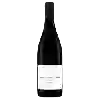
Domaine GagetLes Comperes Morgon 'Côte du Py'
This wine generally goes well with pork, poultry or veal.
Food and wine pairings with Les Comperes Morgon 'Côte du Py'
Pairings that work perfectly with Les Comperes Morgon 'Côte du Py'
Original food and wine pairings with Les Comperes Morgon 'Côte du Py'
The Les Comperes Morgon 'Côte du Py' of Domaine Gaget matches generally quite well with dishes of pasta, veal or pork such as recipes of tagliatelle with carbonara, caramelized lamb mice or the garbure.
Details and technical informations about Domaine Gaget's Les Comperes Morgon 'Côte du Py'.
Discover the grape variety: Valérien
Valérien blanc is a grape variety that originated in . This grape variety is the result of a cross of the same species (interspecific hybridization). It produces a variety of grape specially used for wine making. It is rare to find this grape to eat on our tables. The white Valerian can be found cultivated in these vineyards: Rhone Valley, Loire Valley, Savoie & Bugey, Beaujolais, Languedoc & Roussillon.
Last vintages of this wine
The best vintages of Les Comperes Morgon 'Côte du Py' from Domaine Gaget are 2020, 0
Informations about the Domaine Gaget
The Domaine Gaget is one of of the world's greatest estates. It offers 12 wines for sale in the of Morgon to come and discover on site or to buy online.
The wine region of Morgon
Morgon is one of the ten Beaujolais crus located on the slopes of the Beaujolais hills, on the west bank of the Saône. The appellation applies only to red wines made from the Gamay Grape. Some white grapes are allowed in the Final blend: Chardonnay, Aligoté and Melon de Bourgogne. Although there are no officially defined quantities for these varieties, Morgon's blend is controlled by limiting the proportion of these varieties that are allowed in the Vineyard to a maximum of 15%.
The wine region of Beaujolais
Beaujolais is an important wine region in eastern France, famous for its vibrant, Fruity red wines made from Gamay. It is located immediately South of Burgundy, of which it is sometimes considered a Part, although it is in the administrative region of Rhône. The extensive plantings of Gamay in this region make Beaujolais one of the few regions in the world that is so concentrated on a single Grape variety. Pinot Noir is used in small quantities in red and rosé wines, but in the name of regional identity, it is being phased out and will only be allowed until the 2015 harvest.
The word of the wine: Turbidity
The state of a cloudy wine, due to the presence of colloidal suspensions that prevent the passage of light.














